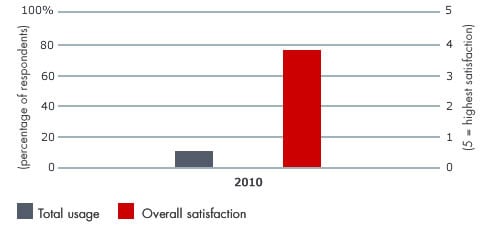Management Tools
This tool was part of the Management Tools 2011 guide. Browse the latest guide here.
Rapid Prototyping is a faster, more effective and lower-cost method of designing and testing an innovation hypothesis before the product launch. It creates real-world tests by quickly putting models in front of customers and then making improvements based on their responses. The methodology reduces the design cycle time and enables multiple tests on a design with less expense, accelerating an innovation's time to market. Instead of the traditional approach—building expensive, nearly complete archetypes before testing them with customers—Rapid Prototyping uses digital simulations and simple models to test customer reactions quickly and inexpensively. Because the models give customers more of a real-world experience, their reactions generate useful information that can be rapidly incorporated in the product's design, reducing postlaunch risks that the new product fails to meet customer needs.

Related Topics
- Computer-Aided Design
- Design Thinking
- Discovery-Driven Innovation
- Managing Innovation
Methodology
To build a Rapid Prototype system, development teams should:
- Identify the most important and risky elements of an innovation project;
- Determine what hypotheses must be tested before making substantial investments;
- Design the fastest, lowest-cost methods for testing hypotheses;
- Test, learn and modify. Redesign prototypes based on customer reactions, consider adding new features suggested by customers and continuously improve the prototype with repeated testing to improve quality and features.
Common Uses
Rapid Prototyping is used to:
- Speed innovation through real-world testing before the product launch;
- Lower innovation costs with less costly prototypes, freeing up development teams to conduct testing that's more thorough and to explore more ideas;
- Reduce risks of failing to meet customer needs by incorporating customer feedback early in the product development cycle, helping to ensure that a product is delivered on time and on budget.
Selected References
Brown, Tim. "Design Thinking." Harvard Business Review, June 2008, pp. 84-92.
Hopkinson, Neil, Richard Hague, and Philip Dickens. Rapid Manufacturing: An Industrial Revolution for the Digital Age. Wiley, 2006.
Liou, Frank W. Rapid Prototyping and Engineering Applications: A Toolbox for Prototype Development. CRC Press, 2007.
MacCormack, Alan. "Product-Development Practices That Work: How Internet Companies Build Software." MIT Sloan Management Review, Winter 2001, pp. 75-84.
McGrath, Rita Gunther, and Ian C. MacMillan. Discovery-Driven Growth: A Breakthrough Process to Reduce Risk and Seize Opportunity. Harvard Business School Press, 2009.
Thomke, Stefan, and Eric von Hippel. "Customers as Innovators: A New Way to Create Value." Harvard Business Review, April 2002, pp. 74-81.